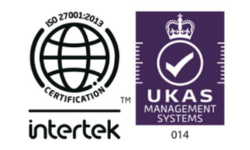As you may already know, student loan repayments are changing as of August 1st, 2023, and will be known as Plan 5. The new plan will be applicable to those undertaking an undergraduate university degree in September 2023.
Students won’t be expected to pay back their loan until the April after they’ve finished their degree and no earlier than 2026.
So what else is changing with the Plan 5 student loan?
Eligibility for the Plan 5 student loan
Students are eligible for Plan 5 if they have started their course on or after the 1st of August 2023 and if:
- They’re studying an undergraduate course
- They’re studying for a Postgraduate Certificate of Education (PGCE)
- They’re taking out an Advanced Learner Loan
If a student is studying for a Postgraduate Masters or Doctoral loan they’ll be on a Postgraduate Loan plan.
How will interest rates change?
Students on Plan 5 will have their interest rate set at RPI (Retail Price Index) “only both during and after studying.”
This means the amount you owe increases over time but only by as much as the price of retail goods and services. So even though the interest rate will affect how long it takes people to pay back their student loan, the amount they pay back each week, month and year will be based on their salary.
When do students pay back their Plan 5 student loan?
Loans will start to be paid back if the student is earning over £480 a week, £2,083 a month, or £25,000 a year (before tax and other deductions).
For those earning below the payment threshold (£25,000) they won’t need to pay back anything in the financial year of 2026 – 2027. The threshold will later be adjusted annually by inflation from April 2027.
What will the total loan look like?
The total loan will be made up of everything borrowed plus interest. But because student loans work differently from normal loans, the amount repaid each week, month or year is completely based on income and not what’s owed. If the balance isn’t paid off within 40 years, it’ll be cancelled.
The total loan can differ depending on where the student lives and studies as well as household income.
If you have employees with student loans, HMRC will instruct you on how to calculate and deduct the correct amounts from payroll. Payslips must also show the deductions so the employee can see how much is being repaid each pay period.
As an employer, you will have to report to HMRC how much you have deducted and ensure employees have a compliant method of accessing their payslips and P60s to confirm this information.
Choosing a reliable payroll provider that offers integration capabilities, can help you nail the payroll process by applying the right tax codes and student loans to each employee. Through automation, payments can be made automatically, reducing the risk of mistakes and increasing employee satisfaction.
To learn more about how payroll can help you manage your staff’s student loans, get in touch with Payescape today.












